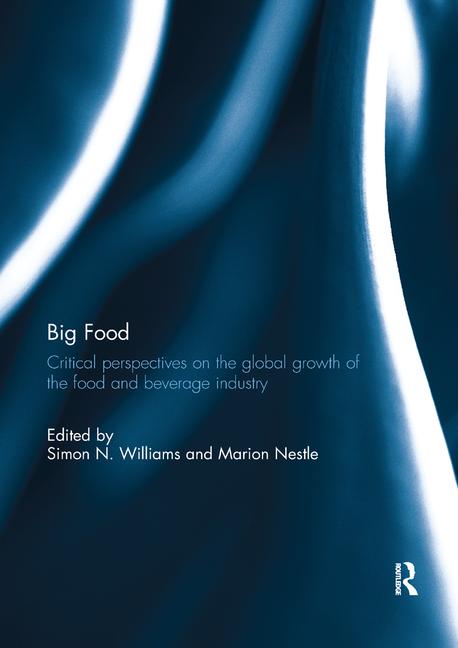One of the Good Carbs
After decades of growing public education about good nutrition and the role it plays in overall health, many if not most consumers are aware of the distinction between good carbohydrates (carbs) like dietary fiber, and bad carbs like sucrose. There’s no question that the overall trend toward healthier eating habits has led to evolving demand in the marketplace, and a deeper understanding of carbohydrate metabolism is a major element of this. Millions of informed consumers are looking for more good carbs and less bad carbs, among other qualities, in the food and beverage products they buy today.
Forward-looking manufacturers are responding by offering products with a range of alternative carbohydrate ingredients that claim improved metabolic balance. This is reflected in smarter choices in the supermarket aisles, and a greater control on the part of consumers as to what they put in their bodies. Thanks to a range of alternative food ingredients,inulin and oligofructose for example, many of these smarter choices are able to retain the appealing characteristics that continue to drive consumer interest, i.e., traditional expectations of taste, texture and mouthfeel.
Prepared with a basic understanding, consumers (and marketers) are now invited to undertake a discussion of the finer points of carbohydrate metabolism. One case in point is Palatinose™ (isomaltulose), a multi-functional carbohydrate ingredient currently available to manufacturers who are sensitive to the worldwide consumer trend toward healthier eating. Palatinose is a low-glycemic carbohydrate providing longer lasting energy in the form of glucose.
What is Isomaltulose?
Isomaltulose occurs naturally in small amounts in honey and sugar cane juice. BENEO obtains its isomaltulose from sucrose using enzymatic rearrangement, which it then markets for use as a next generation carbohydrate in food and beverage applications under the brand name Palatinose.
Like sucrose, Palatinose is a disaccharide composed of glucose and fructose. The difference lies in the linkage between the two constituents. Palatinose has an alpha -1,6 glucosidic linkage, whereas sucrose has an alpha-1,2 glucosidic linkage.
The different linkage gives Palatinose characteristic physiological properties which differ largely from those of sucrose and other common sugars. It is more resistant to use by oral bacteria, so it is kind to teeth unlike traditional sugars. It is more stable under acidic conditions, such as in the stomach environment or in food and beverage applications; and it is slowly hydrolyzed by intestinal enzymes, allowing a slow glucose release which results in a low effect on blood glucose and insulin levels. In fact, it has been shown to exert a positive influence on energy release over time, and on fat metabolism.
So, Palatinose provides the human body with full carbohydrate energy over a significantly longer period of time while having only a low effect on the blood glucose level. Offering balanced and sustained energy, it can be regarded as a carbohydrate providing “slow calories.”
A Low and Sustained Blood Glucose Response
Following a meal containing carbohydrates, released monosaccharide constituents are absorbed into the blood and in the case of glucose are then distributed throughout the body. The result is an increase in blood glucose concentrations after a meal with the highest level at about 30 minutes after intake, extending over a duration of about one to two hours until – with the help of the hormone insulin – the blood glucose level returns to baseline. The various digestion and absorption properties of carbohydrates are reflected in their blood glucose responses:
Readily available carbohydrates have a fast and high blood glucose response (e. g., glucose, sucrose, maltodextrins, or processed starch as in white bread or boiled potatoes). Slowly available carbohydrates like Palatinose have a low blood glucose response. Low-digestible and thus partially available carbohydrates have a very low blood glucose response (e. g., polyols). Non-digestible carbohydrates have no blood glucose response (e. g., dietary fiber).
Even among those that are fully available, carbohydrates can differ largely in their supply of glucose to the body, with consequences for insulin release and energy management. The Glycemic Index (GI) is a means of comparing and classifying available carbohydrates according to their blood glucose response1. The GI is defined as the area under the blood glucose response curve of a 50g carbohydrate portion, expressed as percentage of the response of the same amount of a reference carbohydrate (typically glucose or white bread) taken by the same subject. The GI of a carbohydrate is deemed to be “high” if it is 70 or higher, “medium” in the range between 56 and 69, and “low” if it is 55 or lower.
|
|
The special, slow release properties of Palatinose in the small intestine are reflected in its blood glucose response. A number of blood glucose response studies have shown that its intake is followed by a significantly lower rise in blood glucose levels over a longer period of time in comparison to sucrose. Corresponding blood glucose fluctuations after Palatinose intake are of much lower amplitude than those known from readily-available carbohydrates. In other words, the glucose is supplied in a more balanced way.
Expressing the overall lower blood glucose response in numerical terms, Palatinose has a GI of 32, as determined by Jenny Brand-Miller and her team at Sydney University according to their internationally recognized methodology, using glucose as standard2. In terms of the GI classification of carbohydrates, Palatinose is a low-glycemic carbohydrate. The low blood glucose response is associated with a lower insulin release and less subsequent metabolic changes than in case of readily available, high-glycemic carbohydrates.
The blood glucose response, together with the findings from other studies, illustrates that Palatinose™ is completely, yet very slowly, digested and absorbed in the small intestine leading to a prolonged delivery of blood glucose to the body. In fact, it is the first disaccharide carbohydrate which has low glycemic characteristics and delivers blood glucose over a longer period of time.
Most carbohydrates provide glucose and glucose is energy to the body. Accordingly, the way the glucose is supplied reflects the supply of energy to the body. Considering the fact that glucose from carbohydrate intake is used in preference to glucose that comes from internal sources such as the mobilization of glycogen stores or via the formation from other macronutrient sources, blood glucose can be regarded as a biomarker for energy supply. According to the typical blood glucose response of Palatinose shown in Figure 2 below, this means that it provides carbohydrate energy in a slower, more gradual and balanced way and over a longer period of time. The sustained energy release is a unique property of Palatinose as a result of its slow yet complete intestinal release.
Formulating with Palatinose
Research has shown Palatinose to be well suited for use in energy and sports beverages and nutrition as well as tea, beer and confectionery. With its low hygroscopicity, it is also suitable for powder products such as instant drinks.
In addition to supplying energy to the body and mind in the form of glucose, Palatinose offers significant formulating advantages. Many accrue from its stability with regard to high heat, acidity and enzymes. Unlike sucrose, it is not easily hydrolyzed by acids, thus it is ideal for iso- or even hypotonic-beverage concepts; it can help maintain the osmolality of the final product. It displays a high stability against fermentation by most yeasts and bacteria as well. This quality can provide benefits in the production of beer products, for example, to increase final extract -- resulting in increased palatefullness, body and an optimized true-to-type sensorial profile. Palatinose also offers antioxidative characteristics. It can be used to enhance the stability of food products which are sensitive to oxygen, resulting in improved shelflife.
With its unique slow energy-release properties, its low effect on the blood glucose level and its tooth-friendly nature, Palatinose is one natural carbohydrate which promises health-conscious consumers the potential for improved metabolic balance while it offers new formulating options for manufacturers catering to consumers who are so inclined.
1FAO/WHO (1998) Carbohydrates in human nutrition. Report of a Joint FAO/EHO expert
consultation. FAO Food and Nutrition Paper 66, Rome.
2Sydney University (2002) Glycemic Index of isomaltulose, published in the GI database
Looking for a reprint of this article?
From high-res PDFs to custom plaques, order your copy today!




